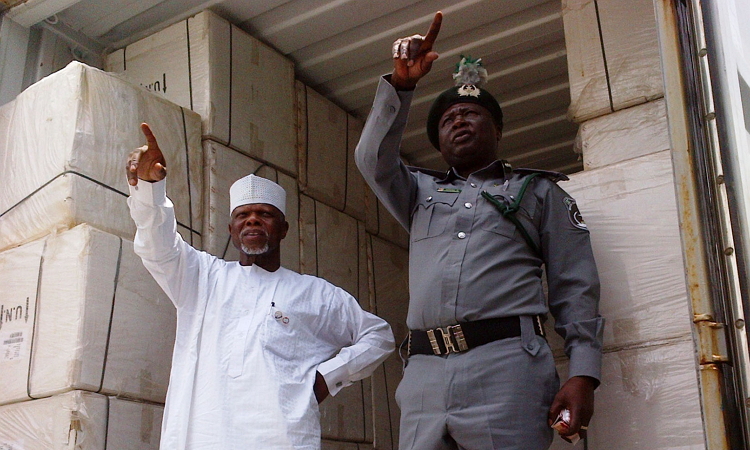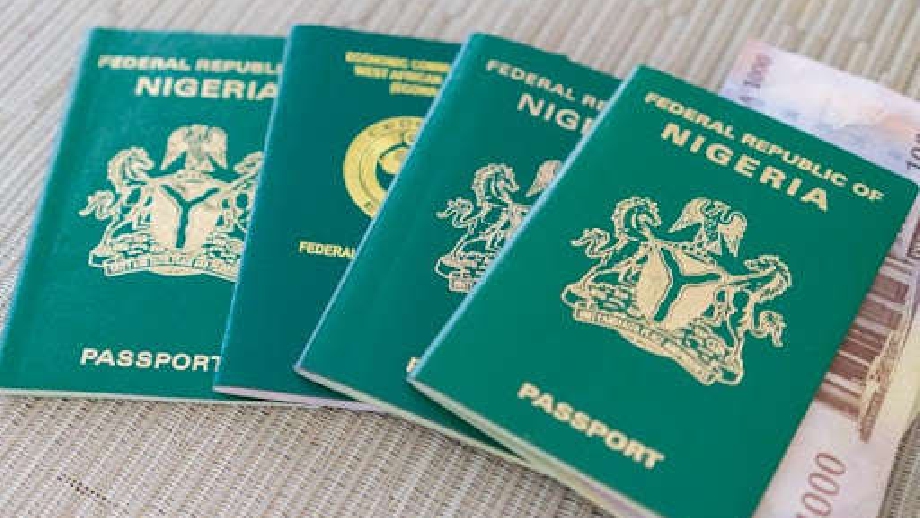Travel/Tourism
Africa’s Freight Demand Rises 15.9% on Asian Investment Flows

By Dipo Olowookere
A new report released last week by the International Air Transport Association (IATA) has shown that African carriers saw increase in freight demand by 15.9 percent in February 2018 compared to the same month last year – the largest increase of any region.
The report disclosed that capacity increased by 3.9 percent and was helped by very strong growth on the trade lanes to and from Asia driven by ongoing foreign investment flows into Africa.
IATA said while the surge in demand on the route looks to have stabilized, volumes still increased by nearly 24 percent in year-on-year terms in January.
Globally, the report revealed that air freight markets for February 2018 recorded 6.8 percent increase in demand measured in freight tonne kilometres (FTKs) compared to the same period last year.
Adjusting for the potential Lunar New Year distortions by combining growth in January 2018 and February 2018, demand increased by 7.7 percent. This was the strongest start to a year since 2015.
Freight capacity, measured in available freight tonne kilometres (AFTKs), grew by 5.6 percent year-on-year in February 2018.
Furthermore, demand growth outstripped capacity growth for the 19th month in a row, which is positive for airline yields and the industry’s financial performance.
The continued growth in air cargo demand is consistent with ongoing robust global trade flows. There are, however, signs that the best of the upturn for air freight has passed. Demand drivers for air cargo are moving away from the highly supportive levels seen last year.
In recent months the Purchasing Managers’ Index (PMI) for manufacturing and export orders has softened in a number of key exporting nations including Germany, China and the US. And the seasonally- adjusted demand for air cargo which rose at a double-digit annualized rate for much of 2017 is now trending at 3 percent.
“Demand for air cargo continues to be strong, with 6.8 percent growth in February. The positive outlook for the rest of 2018, however, faces some potentially strong headwinds, including escalation of protectionist measures into a full-blown trade war.
“Prosperity grows when borders are open to people and to trade, and we are all held back when they are not,” said Alexandre de Juniac, IATA’s Director General and CEO.
The report also said North American airlines’ freight volumes expanded 7.3 percent in February 2018 compared to the same period a year earlier, and capacity increased by 4.1 percent.
Seasonally-adjusted volumes are broadly trending sideways. The weakening of the US dollar over the past year has helped boost demand for air exports.
Data from the US Census Bureau shows a 10.2 percent year-on-year increase in air export volumes from the US in January 2018, compared to a slower rise in imports of 6.7 percent.
In the same vein, European airlines posted a 5.7 percent increase in freight volumes in February 2018. This was almost half the rate of the previous month and the slowest of all regions.
Capacity increased 3.8 percent. Seasonally-adjusted volumes have been volatile in 2018 with the jump in demand in January largely reversed in month-on-month terms in February.
The strength of the Euro and the risks from protectionist measures may impact the European freight market which has benefitted from strong export orders, particularly in Germany, in recent years.
Also, Asia-Pacific airlines saw demand in freight volumes grow 6.5 percent in February 2018 and capacity increase by 7.2 percent, compared to the same period in 2017.
The upward-trend in seasonally-adjusted volumes has returned, with volumes currently trending upwards at an annualized pace of between 6.0 percent and 7.0 percent.
As the largest freight-flying region, carrying close to 37 percent of global air freight, the risks from protectionist measures impacting the region are disproportionately high.
Travel/Tourism
FG to Introduce Biometric Single Travel Emergency Passport 2026

By Adedapo Adesanya
The federal government has announced plans to introduce the new biometric emergency travel document, the Single Travel Emergency Passport (STEP), by 2026 as part of reforms aimed at modernising Nigeria’s immigration processes and strengthening border security.
Initially revealed in November, the Comptroller General of the Nigeria Immigration Service (NIS), Mrs Kemi Nandap, speaking on Monday in Abuja during the decoration of 46 newly promoted Assistant Comptrollers of Immigration (ACIs) to the rank of Comptrollers of Immigration, said the proposed STEP would replace the current Single Travel Emergency Certificate (STEC) and is designed to enhance efficiency, security, and global acceptability of Nigeria’s emergency travel documentation.
She explained that the new emergency passport would be biometric-based and deployed through alternative, technology-driven platforms to ensure seamless service delivery.
“I’m looking forward to embracing 2026, which will also be part of all the reforms we’re doing to ensure that we optimise our services, in terms of visas, passport production lines and our contactless solutions,” she said.
The NIS boss noted that the STEP is one of several technology-driven innovations being rolled out by the Service to improve operational efficiency and meet its constitutional mandate.
She also highlighted the recent introduction of the ECOWAS National Biometric Identity Card (ENBIC), describing it as a critical step towards seamless regional integration and secure cross-border movement within West Africa.
“We want to ensure that our processes are seamless. The STEP, which we are going to launch early next year, is another key programme that will further strengthen our service delivery,” Nandap added.
The Comptroller General charged the newly decorated officers to demonstrate heightened vigilance, professionalism, and integrity, particularly in light of Nigeria’s prevailing security challenges.
“Your decoration today symbolises the trust reposed in you and carries with it expectations of enhanced leadership, sound judgement, accountability and exemplary conduct,” she said.
Mrs Nandap stressed that officers at senior levels must combine professional competence with strong leadership qualities, including clarity of vision, decisiveness, empathy, and the ability to mentor and inspire subordinates.
“Considering the current security challenges our nation faces, we must remain vigilant and unrelenting in the fight against multifaceted threats. Your actions will set the tone and reflect the core values and reputation of this Service,” she warned.
She reaffirmed the Service’s zero tolerance for indolence and unprofessional conduct, urging officers to embrace innovation, adapt to emerging challenges, and place the interest of the NIS above personal considerations.
Travel/Tourism
Moving to France After Retirement: What You Need to Know First

The idea of spending retirement in France comes up often — sometimes because of the climate, sometimes because of the healthcare system, and sometimes simply because of the way everyday life is organised there. But once the initial appeal fades, a practical question usually follows: under what conditions can a retiree actually live in France legally?
The short answer is: it’s possible.
The longer answer requires a closer look.
No “retirement visa,” but a workable solution
Unlike some countries, France does not offer a dedicated retirement visa. This often comes as a surprise. In practice, however, most retired foreigners settle in France under the long-stay visitor visa — a residence status that is not tied to age or professional background.
The logic behind it is straightforward: France allows people to live in the country if they do not intend to work and can support themselves financially. For this reason, the visitor visa is used not only by retirees, but by other financially independent residents as well.
Income matters more than age
When an application is reviewed, age itself is rarely decisive. Financial stability is.
French authorities do not publish a fixed minimum income requirement. What they assess instead is whether the applicant has sufficient and reliable resources to live in France without relying on public assistance. This usually includes:
- a state or private pension;
- additional regular income;
- personal savings.
In practice, the clearer and more predictable the income, the stronger the application.

Housing is not a formality
Relocation is not possible without a confirmed place to live. A hotel booking or short-term accommodation is usually not enough.
Applicants are expected to show that they:
- have secured long-term rental housing;
- own property in France;
- or will legally reside with a host who can provide accommodation.
This is one of the most closely examined aspects of the application — and one of the most common reasons for refusal.
Healthcare: private coverage first
At the time of application, retirees must hold private health insurance valid in France and covering essential medical risks. This requirement is non-negotiable.
Access to France’s public healthcare system may become possible after a period of legal residence, but this depends on individual circumstances, length of stay, and administrative status. It is not automatic.
What the process usually looks like
Moving to France is rarely a single step. More often, it unfolds as a sequence:
- applying for a long-stay visa in the country of residence;
- entering France;
- completing administrative registration;
- residing legally for the duration of the visa;
- applying for renewal.
The initial status is typically granted for up to one year. Continued residence depends on meeting the same conditions.
Restrictions people often overlook
Living in France under a visitor visa comes with clear limitations:
- working in France is prohibited;
- income from French sources is not allowed;
- social benefits are not part of this status.
These are not temporary inconveniences, but core conditions of residence.
Looking further ahead
Long-term legal residence can, over time, open the door to a more permanent status, such as long-term residency. In theory, citizenship may also be possible, though it requires meeting additional criteria, including language proficiency and integration.
For many retirees, however, the goal is simpler: to live quietly and legally, without having to change status every few months.
Moving to France after retirement is not about a special programme or age-based privilege. It is a question of preparation, financial resources, and understanding the rules. For those with stable income and no intention to work, France offers a lawful and relatively predictable way to settle long-term.
No promises of shortcuts — but no closed doors either.
Travel/Tourism
Trump Slams Partial Travel Ban on Nigeria, Others Over Security Concerns

By Adedapo Adesanya
The United States President Donald Trump has imposed a partial travel restriction on Nigeria, as part of a series of new actions, citing security concerns.
The latest travel restriction will affect new Nigerians hoping to travel to the US, as it cites security concerns and difficulties in vetting nationals.
The travel restrictions also affect citizens of other African as well as Black-majority Caribbean nations.
This development comes months after the American President threatened to invade the country over perceived persecution against Christians.
President Trump had already fully banned the entry of Somalis as well as citizens of Afghanistan, Chad, Republic of the Congo, Equatorial Guinea, Eritrea, Haiti, Iran, Libya, Myanmar, Sudan, and Yemen.
The countries newly subject to partial restrictions, besides Nigeria, are Angola, Antigua and Barbuda, Benin, Dominica, Gabon, The Gambia, Ivory Coast, Malawi, Mauritania, Senegal, Tanzania, Tonga, Zambia and Zimbabwe.
Angola, Senegal and Zambia have all been prominent US partners in Africa, with former president Joe Biden hailing the three for their commitment to democracy.
In the proclamation, the White House alleged high crime rates from some countries on the blacklist and problems with routine record-keeping for passports.
The White House acknowledged “significant progress” by one initially targeted country, Turkmenistan.
The Central Asian country’s nations will once again be able to secure US visas, but only as non-immigrants.
The US president, who has long campaigned to restrict immigration and has spoken in increasingly strident terms, moved to ban foreigners who “intend to threaten” Americans, the White House said.
He also wants to prevent foreigners in the United States who would “undermine or destabilize its culture, government, institutions or founding principles,” a White House proclamation said.
Other countries newly subjected to the full travel ban came from some of Africa’s poorest countries — Burkina Faso, Mali, Niger, Sierra Leone and South Sudan — as well as Laos in southeast Asia.
-

 Feature/OPED6 years ago
Feature/OPED6 years agoDavos was Different this year
-
Travel/Tourism9 years ago
Lagos Seals Western Lodge Hotel In Ikorodu
-

 Showbiz3 years ago
Showbiz3 years agoEstranged Lover Releases Videos of Empress Njamah Bathing
-

 Banking8 years ago
Banking8 years agoSort Codes of GTBank Branches in Nigeria
-

 Economy3 years ago
Economy3 years agoSubsidy Removal: CNG at N130 Per Litre Cheaper Than Petrol—IPMAN
-

 Banking3 years ago
Banking3 years agoFirst Bank Announces Planned Downtime
-

 Banking3 years ago
Banking3 years agoSort Codes of UBA Branches in Nigeria
-

 Sports3 years ago
Sports3 years agoHighest Paid Nigerian Footballer – How Much Do Nigerian Footballers Earn












